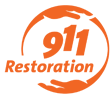 As statistics have shown time and again, fire damage to homes and offices is more common than think.
As statistics have shown time and again, fire damage to homes and offices is more common than think.
During a fire, all kinds of toxic chemicals and poisonous gases are released into the ambient air. This contaminated air is extremely dangerous to your health, particularly if you have pre-existing health conditions.
Due to so many health hazards involved, DIY restoration projects are not advised. Our team at 911 Restoration Headquarters will use special tools and equipment and safety precautions when carrying out any fire restoration services.
Take a look at a list of equipment you can expect a fire restoration specialist to use.
Measurement Tools for Testing
Assessing the damage due to the fire is the most important part of restoration work. The team will use various testing tools such as pressure monitors, thermal imaging cameras, and concrete testing tools to learn the extent of the fire, smoke, and water damage.
In addition, if the area was flooded or had water damage in addition to the fire damage, you will need moisture meters and thermo-hygrometers to assess the water damage.
Airflow Tools
Fire restoration teams will use specialized air movers to begin cleanup. Other items include:
- dehumidifiers
- cavity dryers
- axial air movers
- extension accessories (when electrical outlets are unsafe for use)
In addition, water damage after a fire is very common, especially if a sprinkler went off to put out the fire. This will necessitate the use of additional tools such as dehumidifiers and air scrubbers, commonly used after a hurricane or flooding.
Dehumidifiers are essential if you want to prevent the growth of mold spores and initiate mold remediation efforts. If the burned-down area was also flooded by water from burst pipes, your fire restoration team would use water pumps to remove the standing water from the area.
Smoke and Soot Removal (and other sanitation equipment)
The smoke and soot released after a fire will require specialized equipment for removal. This is a difficult process and should be carried out before the smoke and soot are allowed to damage or permeate the property permanently. Various chemicals and tools such as HEPA vacuums will be used to expedite the process. Such equipment needs to be graded safe for use in wet environments.
Carpets that survived the fire but were affected by smoke damage may be salvaged with a carpet cleaner that can spray chemicals and hot water to clear out the smoke and soot.
Since the air will be saturated with smoke and smell, expect the fire restoration team to use a ULV fogger to deodorize the home.
Special sponges will be used to clean tiny soot particles embedded in walls, furniture, and other areas. In addition, various chemicals and cleaners will then be applied to clean all the areas that were affected by the smoke or fire.
Other sanitation tools include:
- Sweepers
- Spotting machines
- Hoses
- Power wands
Finally, the home or office will be properly sanitized by fire restoration technicians to make the property suitable to live in.
Safety Precautions Used During Fire Damage Restoration Services
Since fire restoration can be tough, technicians will use appropriate safety precautions to minimize the inherent danger involved during cleanup services. Individuals must be trained to operate specialized equipment such as air movers and HEPA vacuums.
Technicians and occupants will be exposed to various hazards including:
- loose electrical wiring
- carbon monoxide poisoning
- hazardous material
- respiratory hazards
- further fire outages
Fire restoration technicians will use personal protective equipment (PPE) to minimize their exposure during restoration services. Examples of commonly used PPE include:
- Hard hat
- Eyewear
- Rubber boots
- Protective clothing such as hazmat suits
- Chemically resistant gloves
- Face masks or respirators
The following safety measures will be used after fire damage:
- The use of appropriate personal protective equipment and N99 masks (and others)
- Avoiding direct skin contact with materials affected by ash or smoke
- Avoiding exposure to areas contaminated with smoke
- Not breathing in the toxic smoke
- Not allowing children or pets to enter areas that are still contaminated with smoke and soot
- Using various tests to test the area for the presence of toxins
- Discarding foods and beverages that have been contaminated with fire and smoke damage.
- Using HEPA air scrubbers to remove particulate matter
There is a list of potential hazards that technicians must take into account, including:
The risk of ceiling collapse: If the property has gone through extensive damage from the fire, there could be a risk of imminent structural collapse.
Mold: Found everywhere in the house as long as there is a source of food and water for mold spores to grow.
Loose electrical wiring: electrical currents that may be flowing through a damaged area
Chemicals: Exposure to toxic chemicals that can cause respiratory damage to occupants.
Wrapping Up
Fire damage should be dealt with by restoration specialists who have the experience and knowledge of dealing with smoke, soot, fire, and chemicals. For more information, get in touch with 911 Restoration. Our team will inspect the property for fire damage and design a detailed restoration plan.
We will also secure your property to prevent further damage. The key to getting back on your feet after fire damage is a quick response.

